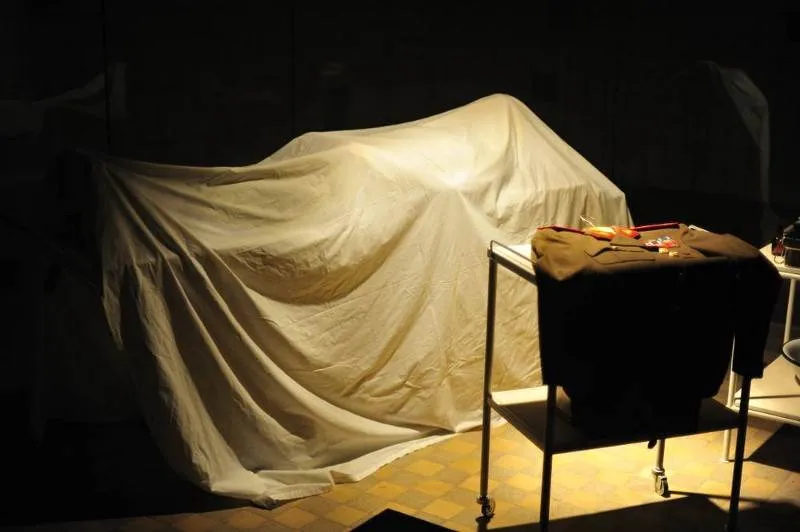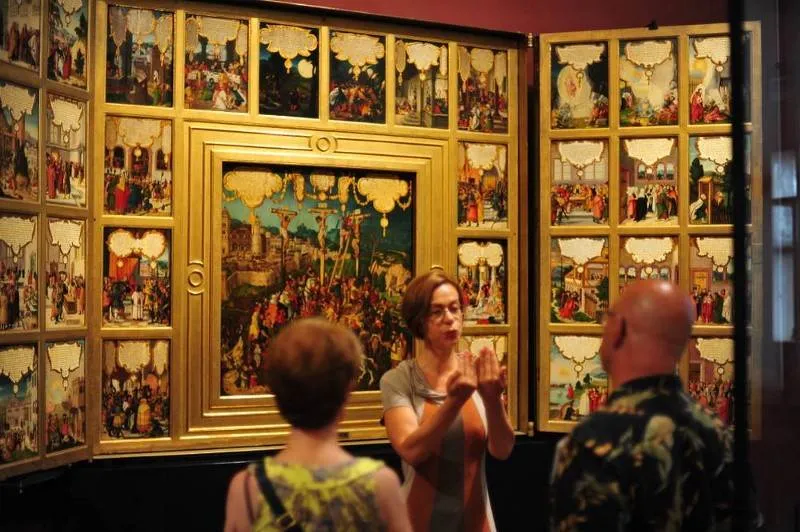
During our epic trip across Europe, we had the opportunity to go on a couple of guided tours aimed at a more… intellectual crowd. At some companies, seemingly any local can be hired to recite an approved script; with Context Travel, tour guides have a Master’s or Ph.D. degree. There are no scripts in sight, and it’s clear tour guides are speaking from their own experience and knowledge. Better still, small groups (no more than six people per tour) encourage questions and interaction.
Since I’d rather not spoil all the fun — or try to replace a well-educated tour guide — consider this a preview of things to come when you go yourself.
Disclosure: our tours with Context Travel were complimentary. All views remain my own.
From Iron Curtain to Velvet Revolution (Prague)

Covering a fairly wide swath of Prague’s history in only three hours means a lot of skimming, so pay attention and follow closely.
Start with a mural created in Prague’s subway. It dates from World War II, when the Czech army fought with Germans (and lost). Still, it was good for Communists since it was propaganda and good to see the heroes of the regime struggle.

A nine-meter-tall horse statue of Jan Žižka, a highly respect Czech general during the 14th-15th centuries. It sits at the head of National Memorial on the Vítkov Hill — finished in 1940, unveiled in 1946, and restored in 2011. It’s a great Czech example of realist sculptures between the wars.

One of several ‘death masks’ seen inside the Narodni Muzeum. Emil Holub was a doctor, traveler, and collector of ethnographic and scientific objects — and there are several others like it telling some interesting stories.

Perhaps one of the most bizarre sites in Prague will be found in the basement. It wasn’t until 17 days after Klemet Gottwald’s death that they decided to preserve it. The laboratory grew under the original structure, an his body had already began to decompose. Look to the ceiling for high tech fly catching. It’s anything but dignified, since they had to use someone else’s legs. Ashes now stored in stone crypt that used to be the freezer. It wasn’t until 2003 that things turned into a museum.

Walk down the plaza towards the Marks and Spencer building and Kino Lucerna theater. The parody of dead horse (representing Czech democracy) — hangs until Czech becomes monarchy. There’s a lot more to the story, naturally — but it’s better to hear it from the guide.
After passing by the Wenceslas statue — the heart of the 1918 birth of Czech Republic — begin looking for the tank:

Look for the T-34 Russian tank, which helped to liberate Poland and Czech Republic (though recall Czech Republic didn’t technically exist until after World War II).
You’ll also hear the story of a Stalin statue no longer exists — artists committed suicide afterwards in shame. Finished in 1955, destroyed in 1960, it took a year to destroy since Czech granite is very hard and the base was reinforced concrete. Was also a bunker underneath in case of nuclear war.
While on the tour, expect to see a Franciscan monastery and public garden, as well as a monument to Kafka — slices of a swirly head slices back and forth to eventually form a face.
It’s a three-hour walking tour, and although it’s not a difficult hike, some good shoes and a bottle of water remain good ideas. Marek offers an excellent introduction to Prague’s formation and history, though it does presume you already have at least a passing familiarity with it.
Learn more about this tour here.
Kunstkammer (Vienna)

Part of the Kunsthistorisches Museum in Vienna is the Kunstkammer, a significant section (wing?) of the much larger museum.Fun fact: the Kunsthistorisches and Natural History Museum are in two identically constructed buildings. As a whole, the museum could take you an entire day to thoroughly enjoy, but this tour is limited only to the Kunstkammer section.
It’s more than enough, though. The two-hour tour covers the ‘Cabinet of Curiosities’ once collected by the aristocracy and royalty from generations now centuries past. The exhibit opened in 2013, and perhaps the only criticism of the museum is that the building is as beautiful or more beautiful than the paintings / art.

Presenting a Winged Altarpiece — complete with icons, stories, and pictorial narrative, it tells a story along with the other images. Open these like pages of a book for many different holidays. If memory serves, this was noted as being unique for its size and complexity.

A gilded bronze piece from the 16th century, an allegory of the four seasons, and the last remaining part of a three-meter silver fountain melted down in the 18th century.
As with the other tour, there’s a ton of wonderful art to see — and almost none of it will be familiar to the casual arts fan. These are unique, exotic pieces from the Hofburg collection — an amalgamation of art and natural history. Essentially, anything that looks expensive and exotic to the tastes of the rich and powerful.

A salt-and-pepper container piece with gold, enamel, ebony, and ivory from the 16th century — but it’s far from just that. Look for Neptune, Tellus (the earth deity), the times of the day, and the four winds. King Francis I of France commissioned the work as showing him in control of these cosmos.
These “aristocratic forms of art could only belong to the super wealthy”. Automatons were fascinating to these rulers, along with anything that combined a number of elements from the manmade world and the natural one.

A gilded and painted silver, copper alloy, and iron automaton in the form of a ship from the late 16th century. The ship originally used to scoot across a table, and the crew used to move to music played inside the ship. There’s even a little cannon that fires a shot.
I’m a bit surprised replicas aren’t on display to show the motions, but they have the next-best thing: some tablet computers showing animations of how they used to work.
This collection continues (roughly) chronologically through the 19th century — and of course there are still plenty of paintings and other rooms to explore.
Learn more about this tour here.
Overall
In the eight-plus years I’ve been traveling, I’ve avoided guided tours unless they were the only practical way to reach a place, or for trying to really pack the schedule. This is one of the first guided tours I’ve been on — and enjoyed — that didn’t fit one of those guidelines. The guides are spectacularly informed, highly educated, and currently teaching (or qualified to teach) university-level classes.
These tours aren’t for everyone, though. Being a small-group sort of tour means they do tend to be a bit more expensive then tours for the masses. They’re aimed at folks who have a genuine interest and knowledge in the subject — anyone just looking to look smart might want to look elsewhere. It’s best to do some reading ahead of time, but consider this a perfect opportunity to pick the brain of a learned colleague, much as you would a former college professor.
Recommended.


